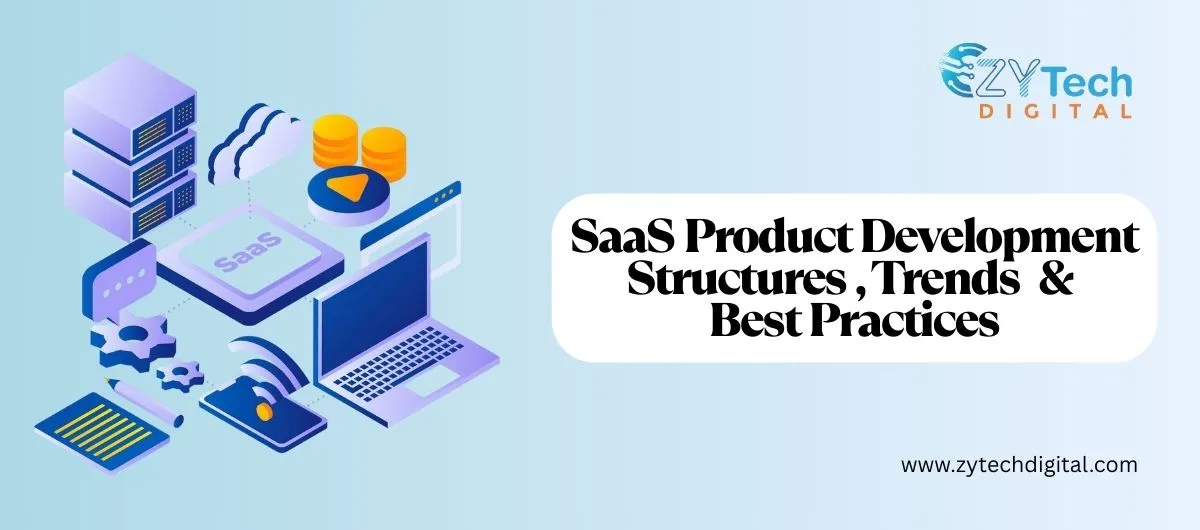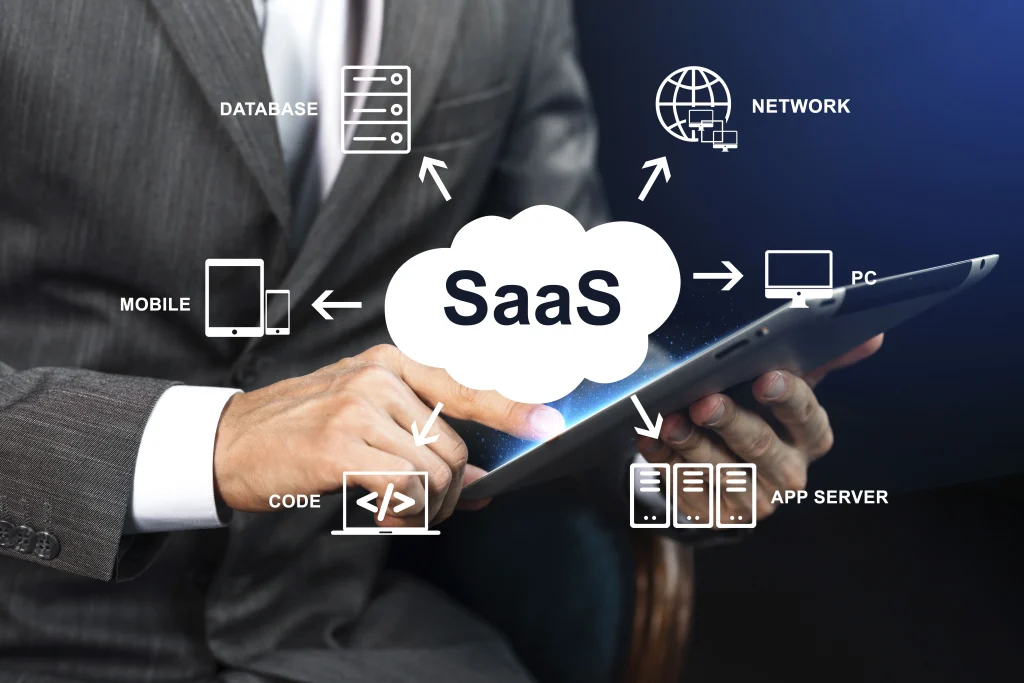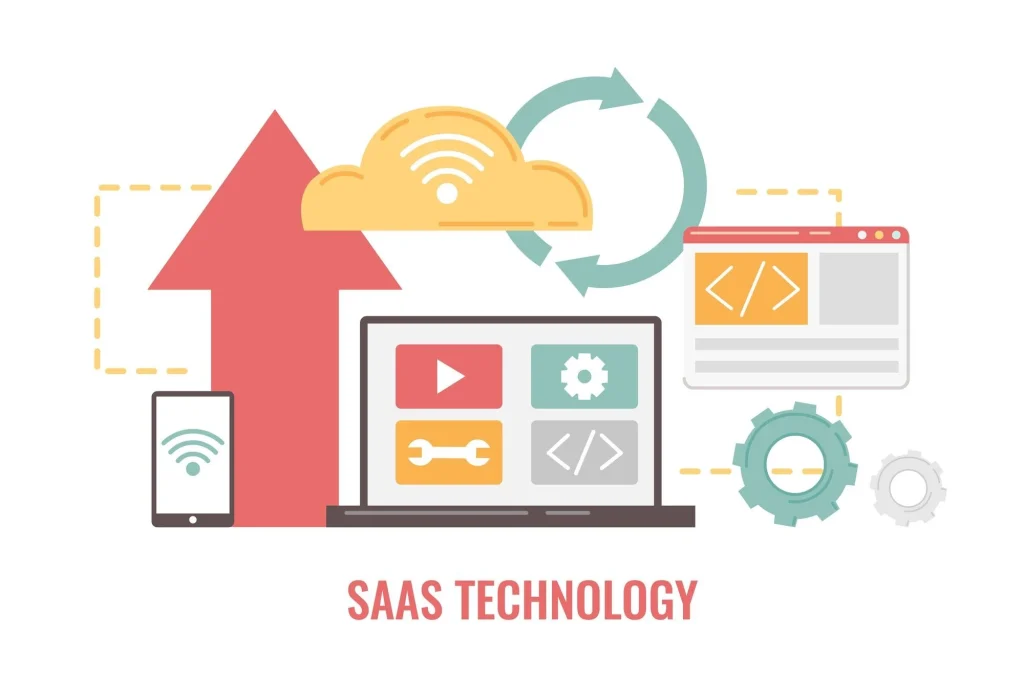
- May 12, 2025
- admin
- 0
Software as a Service (SaaS) has revolutionised the way businesses operate, offering a cloud-based model where software is provided to users over the internet, rather than requiring installation on individual computers. As the world moves increasingly towards cloud-based solutions, developing a successful SaaS product has become a priority for businesses aiming to scale efficiently. In this comprehensive guide, I’ll walk you through everything you need to know about SaaS product development—from the fundamentals to real-world examples, and the steps involved in building a successful SaaS business.
What is SaaS and How Does it Work?
SaaS, or Software as a Service, refers to cloud-based software applications that are delivered via the internet. Unlike traditional software, which requires users to download and install it on individual machines, SaaS allows users to access the software through a web browser or app. This means businesses and individuals can use powerful software solutions without needing significant local infrastructure or maintenance.
Popular cloud servers like Amazon Web Services (AWS), Microsoft Azure, and Google Cloud host SaaS applications, ensuring that the software is always up-to-date, secure, and easily scalable. These servers provide the infrastructure necessary for SaaS products to operate smoothly across multiple devices and geographies.
The Core Structures of SaaS: Multi-Tenant vs. Single-Tenant Architectures
When developing a SaaS product, choosing between multi-tenant and single-tenant architecture is crucial. Each offers distinct advantages depending on your business needs.
- Multi-Tenant Architecture: In this model, many customers share one instance of the software, but each customer’s data is kept private and isolated. It’s cost-effective and scalable because updates or changes are rolled out across all users simultaneously. This model is ideal for fast-growing startups or companies that need a scalable, low-cost solution.
Example: Dropbox is an excellent example of a SaaS that uses multi-tenant architecture. It allows millions of users to store files in the cloud while keeping their data private.
- Single-Tenant Architecture: Here, each customer gets a dedicated instance of the software and database. This offers enhanced security and customisation but at a higher cost to maintain and operate. Companies with specific security or compliance requirements, such as those in finance or healthcare, often prefer this model.
Example: Salesforce’s enterprise clients may opt for single-tenant architecture for more control over their data and custom features.
Why Should You Develop a SaaS Product Development?
If you’re contemplating whether SaaS product development is right for your business, let’s take a look at the key benefits:
- Recurring Income: SaaS products typically operate on a subscription model. This predictable revenue stream allows you to plan long-term growth and scale more effectively.
- Low Initial Costs: Customers only need an internet connection to use the product, and SaaS businesses don’t need to invest in physical infrastructure, reducing entry barriers.
- Scalability: As demand increases, your SaaS product can scale with ease. Cloud infrastructure allows seamless scaling, meaning you don’t have to worry about additional hardware investments.
- Global Reach: SaaS is accessible from anywhere in the world, which means your product can be used by a global customer base, expanding your reach without the need for local installations.
- Automatic Updates: Software updates are automatically applied, ensuring that your users always have access to the latest features, security updates, and bug fixes without requiring manual downloads.
- Security: Since SaaS products are centrally hosted, they benefit from robust security measures, and regular updates help prevent breaches.
Need help choosing the best technologies for your SaaS solution? CONTACT US

Common Types of SaaS Applications
Understanding the different types of SaaS applications is essential when developing your product. Here’s a breakdown of some of the most common categories:
- Customer Relationship Management (CRM): CRMs help businesses manage customer interactions. HubSpot is one of the most popular examples, offering marketing, sales, and customer service tools.
- Enterprise Resource Planning (ERP): ERP systems help businesses integrate various functions such as finance, HR, and supply chain. Oracle NetSuite is a leading ERP solution.
- Accounting and Billing Solutions: Automating accounting processes is a significant benefit for SaaS products. Zoho Books is a prime example of an accounting SaaS solution that automates invoicing, expenses, and financial reporting.
- Project Management Tools: These tools streamline workflow and enhance team collaboration. Trello and Asana are excellent examples that simplify project tracking and team coordination.
- Vertical SaaS: These tools target specific industries or business functions. For example, Veeva offers cloud-based software specifically designed for the pharmaceutical industry.
Building a SaaS Product: Step-by-Step Guide
Now that we’ve covered the fundamentals, let’s dive into the process of developing a SaaS product.
1. Validate Your Idea
Before you start developing your SaaS product, you must ensure that your idea has market demand. Here’s how to validate your idea:
- Conduct Market Research: Understand the landscape of the SaaS industry. Look for gaps in the market and competitors offering similar solutions.
- Identify Your Target Audience: Who will benefit from your product? Conduct surveys, interviews, and focus groups to identify pain points that your product can address.
Real-life example: Slack started as a communication tool for a gaming company. It evolved into a SaaS product for businesses when they realized there was a demand for a better team collaboration tool.
2. Define Product Features
With a validated idea, the next step is to outline the features of your product. Focus on solving your users’ primary pain points with core functionality and prioritize features based on customer demand.
Common Features to Include in Your SaaS Product:
- User Authentication and Authorization
- Data Security and Privacy Controls
- Intuitive User Interface (UI)
- Customer Support and Knowledge Base
Example: Trello’s clean interface and simple task management features appeal to its users, making it one of the most popular SaaS project management tools.
3. Choose Your Monetization Model
There are several ways to price a SaaS product. The right pricing model will depend on your target market and business goals. Here are some common options:
- Per-User Pricing: Charge customers based on the number of users (ideal for team-based tools like CRMs or project management software).
- Tiered Pricing: Offer different pricing tiers based on features or storage, allowing customers to pick a plan that suits their needs.
- Freemium Model: Provide basic features for free, with the option to upgrade to a paid version for advanced functionality.
Real-life Example: Dropbox uses the freemium model, offering a free plan with limited storage and paid plans for users who need more space.
4. Select the Right Technology Stack
Choosing the right technologies for your SaaS product is crucial to ensure performance, scalability, and security. Consider both front-end and back-end technologies that can handle the demands of your application.
- Back-End: Frameworks like Node.js and Ruby on Rails are popular choices for building the server-side of a SaaS application.
- Front-End: Use JavaScript frameworks like React or Vue.js to build a responsive and interactive user interface.
- Database: Consider using PostgreSQL for robust data management, or Redis for fast in-memory storage.
Testing and Launching Your SaaS Product Development
Once you’ve developed the core features and selected your technology stack, it’s time to launch. Testing is a crucial step to ensure your product works as expected. Some best practices include:
- Beta Testing: Release your product to a small group of users and gather feedback.
- Load Testing: Ensure that your SaaS product can handle heavy traffic without crashing.
- Security Audits: Ensure that all data is encrypted, and user privacy is protected.
Post-Launch: Marketing and Scaling Your SaaS Product
After the initial launch, it’s important to focus on scaling and marketing your product. Here are a few strategies to consider:
- Content Marketing: Use blogs, tutorials, and case studies to educate your audience and improve SEO.
- Referral Programs: Encourage existing users to refer others by offering incentives like discounts or free months.
- Customer Support: Provide excellent support through live chat, knowledge bases, and email to keep users happy.
Example: Zoom grew exponentially by offering simple, scalable video conferencing that was easy for anyone to use. They capitalized on word-of-mouth marketing and strategic partnerships, making them a leader in the SaaS space.

Common Challenges in SaaS Product Development
Despite the many advantages of building a SaaS product, there are challenges that developers face. Understanding these challenges can help you prepare and overcome them more effectively.
1. Data Protection and Privacy
Data security is one of the biggest concerns in SaaS development. Companies must ensure that user data is protected from unauthorized access, cyberattacks, and accidental loss. Regular backups, encryption, and compliance with regulations (e.g., GDPR, HIPAA) are crucial to safeguarding sensitive information.
2. Integration with Third-Party Services
SaaS applications often need to integrate with other tools and services, such as CRM systems, payment gateways, and analytics platforms. Inadequate integration can lead to data silos and inefficient workflows. For example, if you’re building a SaaS product that involves payments, a seamless integration with a payment processor like Stripe or PayPal is essential.
3. Scalability and Performance
As your SaaS product grows, scalability becomes a major concern. Ensuring that your product can handle increasing traffic, data, and user demands is critical. Cloud infrastructure providers like AWS and Google Cloud offer tools to scale your product quickly without compromising performance.
4. Customer Support and Retention
Customer support is essential for maintaining a loyal user base. Offering various support channels, such as live chat, email, and help centres, can improve customer satisfaction. Additionally, using data analytics to identify common issues and improve the product can help reduce churn and increase customer retention.
The Cost of Building a SaaS Product Development
Building a SaaS product can be costly, depending on the complexity, team size, and technology stack. The development process typically involves hiring skilled professionals, including product managers, designers, developers, and QA engineers. Additionally, there are costs associated with infrastructure, marketing, and ongoing maintenance.
Here’s a rough breakdown of costs for developing a simple SaaS application:
- Development Team: $100,000 – $300,000+
- Cloud Hosting (AWS/Google Cloud): $1,000 – $3,000/month
- Marketing & Promotion: $10,000 – $50,000+
- Ongoing Maintenance: $5,000 – $20,000/month
Of course, these are just estimates, and costs can vary depending on the complexity and scope of your project. It’s always advisable to consult with a development partner to get a more accurate estimate.
Future Trends in SaaS Development
SaaS product development is constantly evolving. Some of the emerging trends include:
- AI and Machine Learning Integration: AI is becoming a key component of many SaaS products. From predictive analytics to automation, AI enhances user experience and operational efficiency.
- Vertical SaaS: Industry-specific SaaS solutions are gaining traction. These products are designed to meet the unique needs of sectors like healthcare, education, and legal services.
- Low-Code/No-Code Development: These tools allow users to build SaaS applications with minimal coding knowledge, enabling faster development and reducing dependency on engineering teams.
- API-First SaaS: Companies are moving toward API-first SaaS products, which offer greater flexibility and easier integration with other services.
READ MORE: 10 Best Recruiting CRM Software of 2025
Frequently Asked Questions About SaaS Product Development
It typically takes 3 to 9 months, depending on the complexity, features, and team size. A simple MVP can be developed in 2-3 months, while enterprise-grade solutions take longer.
An MVP (Minimum Viable Product) is the simplest version of a SaaS application with core features to validate product-market fit. It helps reduce time to market, gather real-user feedback, and secure funding or early adopters before full development.
To develop a SaaS product, start by identifying a market need and defining your product’s core features. Then, create a detailed plan, choose the right tech stack, build an MVP (Minimum Viable Product), test it thoroughly, and launch. Post-launch, focus on user feedback, feature updates, scalability, and ongoing support.
The 3-3-2-2-2 rule of SaaS is a growth benchmark suggesting that a healthy SaaS company should aim to triple its revenue for the first two years, then double it for the next three years. In short:
Triple–Triple–Double–Double–Double over five years.
Yes, AWS (Amazon Web Services) is not a SaaS company itself; it is primarily a cloud service provider offering IaaS (Infrastructure as a Service) and PaaS (Platform as a Service), though it also hosts and provides some SaaS solutions like Amazon Chime and Amazon WorkDocs.
SaaS runs in the cloud and works via a browser—no installation needed. Users subscribe monthly, but customization is usually limited.
Speak With Expert
Fill The Form Below

